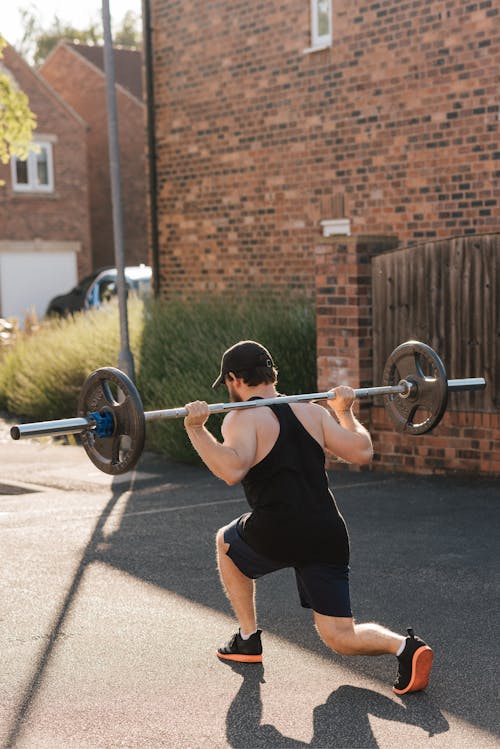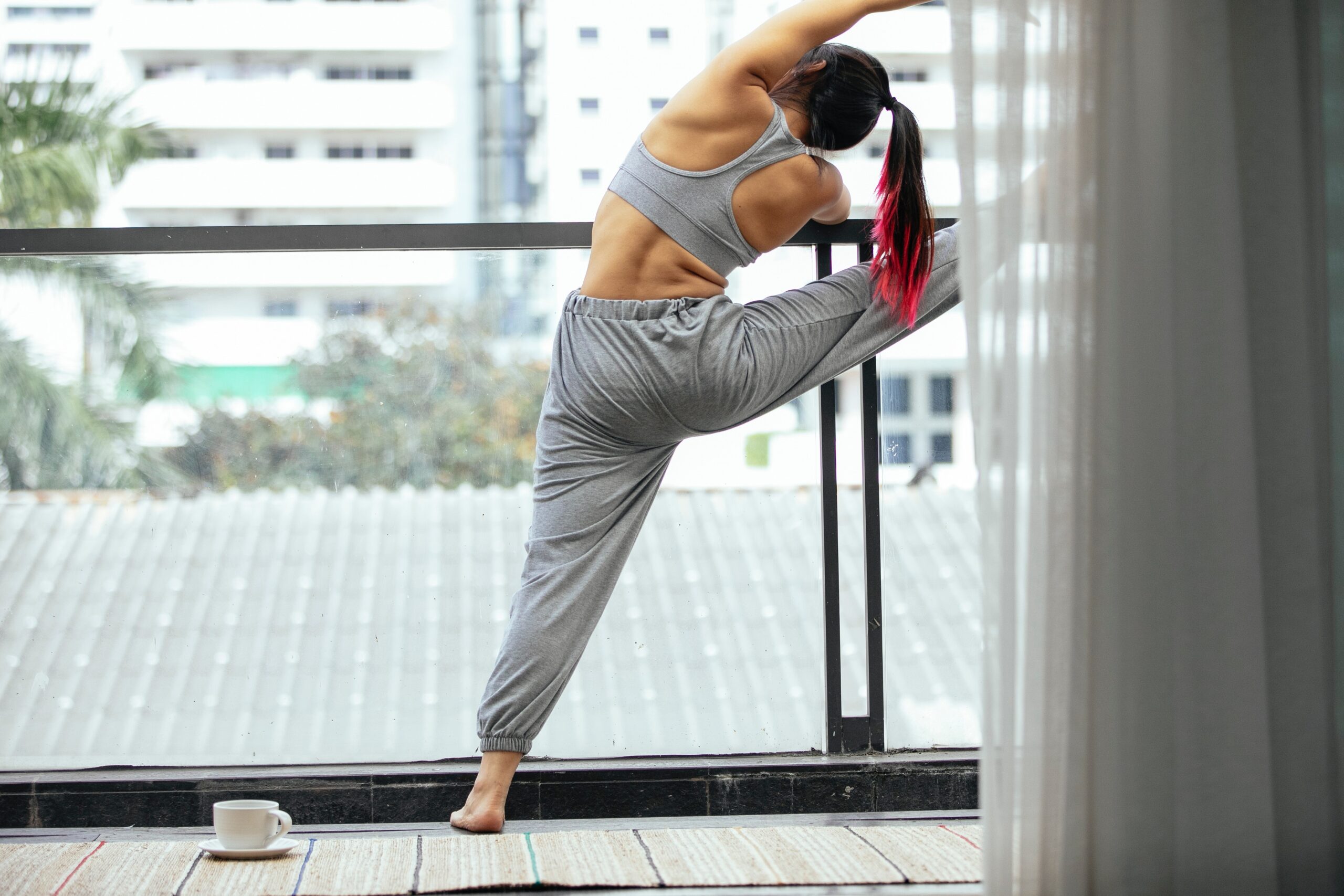In the field of fitness, strength training plays a key part in helping people accomplish their health and fitness objectives. Among the various strength training exercises available, the back press stands out as a very effective and adaptable activity for building the muscles in your upper back, shoulders, and arms. In this in-depth essay, we will discuss the broad advantages and detailed nuances of the back press, throwing light on why it should be a vital component of your workout programe.
Table of Contents
The Back Press Exercise: A Detailed Examination
The back press, commonly referred to as the shoulder press or military press, is a compound exercise that mainly targets the muscles of the upper body, particularly the deltoids, trapezius, and triceps. This workout includes raising a weight, such as a barbell or dumbbells, from shoulder height to above while standing or sitting. The back press is a basic technique in strength training, and its advantages extend beyond increasing muscle. Let’s go further into the various benefits of this exercise and the complexities of its implementation.
Benefits of the Back Press
Upper Body Strength
One of the biggest advantages of the back press is its ability to enhance upper body strength. The exercise provides major focus on the deltoid muscles, which are responsible for shoulder mobility, and the triceps, which play a critical part in arm extension. A stronger upper body is not only physically pleasing but also vital for executing many day-to-day duties with ease.
Improved Posture
The back push assists in strengthening the trapezius muscles, which support and stabilize the neck and upper spine. As a consequence, it may lead to better posture by minimising the likelihood of developing typical disorders like rounded shoulders or a hunched back. Good posture is not only visually beautiful but also vital for spinal health.
Core Engagement
To perform the back press properly, one must activate the core muscles. This extra aspect of core engagement promotes overall stability and helps prevent the lower back from damage. An engaged core is crucial to maintaining a strong and balanced body.
Enhanced Functional Strength
The back press replicates real-life activities such as lifting goods above. By increasing these functional motions, you may increase your ability to do daily chores, which is particularly useful as you age. It may help you maintain an active, independent lifestyle and lower the chance of injury during regular activities.
Versatility
One of the outstanding qualities of the back press is its adaptability. This exercise may be done with numerous kinds of equipment, including barbells, dumbbells, kettlebells, and even resistance bands. This versatility enables you to modify the workout to your fitness level and equipment availability, making it accessible for persons of all abilities.
Proper Technique: Step-by-Step Guide
Executing the back press with good form is vital for maximizing its advantages and avoiding the risk of injury. Here’s a step-by-step tutorial to executing a conventional standing barbell back press:
Start by standing with your feet shoulder-width apart, ensuring that your weight is equally distributed between both feet. Position the barbell on a squat rack so that it sits at shoulder height. Grip the bar with your hands slightly wider than shoulder-width apart, ensuring your palms face front.
Maintain a tiny bend in your knees to prevent locking them. This posture will give you with stability and reduce needless pressure on the joints.
Tighten your core muscles to support your spine and maintain an upright posture. Ensure your back is straight, and your chest is up.
Before raising the barbell, take a deep breath to stabilise your core. This breath-holding method helps stabilise your spine and establish a strong, solid foundation.
Press the barbell overhead in a controlled way, extending your arms completely without locking your elbows at the top. Exhale as you push the weight upward.
Once the barbell is completely stretched above, stop momentarily to verify you have perfect control over the weight.
Lower the barbell back to your upper chest in a calm and controlled way, breathing as you do so.
Repeat the exercise for the required number of repetitions, ensuring that each repetition is executed with perfect form.
Safety Tips and Additional Considerations
While the back press is a very effective workout, it’s crucial to emphasise safety. Here are some safety recommendations and other concerns to bear in mind:
Start with a Light Weight: If you are new to the back press or have not done it in a while, it’s advised to begin with a light weight. This helps you to perfect the technique and steadily raise the weight as your strength grows.
Avoid Jerky motions: Jerky or explosive motions may strain your joints and increase the chance of injury. Ensure that the back press is executed in a smooth and controlled way, with an emphasis on appropriate form.
Warm-Up: A full warm-up is important before starting in any strength training programme. A warm-up prepares your muscles and joints for the rigours of the back press. You may combine dynamic stretches and mild aerobics to elevate your heart rate and enhance blood flow to the muscles.
Utilize a Spotter: When lifting high weights, it’s important to have a spotter, particularly if you’re completing the exercise with a barbell. A spotter may aid you in case you struggle to raise the weight or suffer muscular fatigue.
Listen to Your Body: Pay special attention to how your body reacts throughout the activity. If you encounter pain, discomfort, or a lack of control, it’s vital to stop immediately and get help from a fitness expert.
In-Depth Analysis of Muscle Engagement
Understanding the individual muscles targeted by the back press is vital for improving your training and reaching your fitness objectives. Let’s take a deeper look at the muscle groups involved in this workout.
Deltoids (Shoulders): The deltoid muscles are responsible for the abduction, flexion, and extension of the arms at the shoulder joint. During the back press, all three heads of the deltoids – the anterior, lateral, and posterior – are engaged. The anterior deltoid plays a vital part in lifting the arms above, whereas the lateral deltoid offers support throughout the exercise. The posterior deltoid is predominantly activated as you drop the weight back to your chest.
Trapezius (Upper Back): The trapezius muscle, usually known as the traps, are engaged to support and govern the movement of the scapula (shoulder blades). They also play a function in retracting the scapula during the lowering part of the exercise.
Triceps (Arms): The triceps brachii, generally referred to as the triceps, are the major muscles responsible for extending the elbow joint. During the back press, the triceps are significantly engaged as you extend your arms to push the weight above.
Core Muscles: While the major emphasis of the back press is on the upper body, the core muscles play a critical role in supporting the spine and maintaining appropriate posture during the exercise. Engaging your core not only minimises the chance of injury but also helps increase functional strength.
Training Variations and Progressions
To keep your exercises interesting and successful, it’s necessary to integrate training variations and progressions. The back press provides several options to adjust the workout and personalise it to your individual objectives and fitness level. Here are some training variations to consider:
sitting Back Press: While the standing back press is the most typical version, you may also execute the exercise while sitting. Seated back presses give extra stability and support for your lower back and may be especially effective for people with balance or mobility concerns.
Dumbbell Back Press: The back press may be done with dumbbells, which allows more flexibility of movement for each arm. Dumbbells also take greater stabilizing work, making them a good option for strengthening balance and muscular symmetry.
Smith Machine Back Press: The Smith machine is a piece of gym equipment that directs the barbell in a set vertical motion. This might be advantageous for persons who are new to the back press, since it gives increased safety and control.
Push Press: The push press is a dynamic form of the back press that utilises leg force to assist lift bigger weights. This is a good alternative for people wishing to enhance the intensity of their exercise.
Resistance Band Back Press: For people who do not have access to conventional weightlifting equipment, resistance bands provide a practical and effective alternative. Resistance band back presses give a unique kind of resistance and may be customised to varied fitness levels.
Single-Arm Back Press: The single-arm back press enables you to isolate and develop each shoulder individually. This version is excellent for discovering and treating muscular imbalances.
pace and Repetition Schemes: Altering the pace of your back press repetitions (e.g., slowing down the lowering phase) and adjusting the number of sets and repetitions will assist drive muscle development and adaptation.
Creating a Back Press Training Program
To build an efficient back press training program, it’s vital to consider your fitness objectives, experience level, and the equipment accessible to you. Here are some broad recommendations for constructing a back press exercise plan:
Goal Setting: Clearly state your objectives, whether they be to grow muscle, increase strength, improve posture, or boost functional fitness. Your objectives will impact the framework of your training program.
Frequency: For most people, practising the back press 2-3 times a week is adequate for considerable growth. Allow ample rest between sessions to encourage healing.
Warm-Up: Prior to every back press training, including a warm-up regimen that involves dynamic stretching and mild cardio. A decent warm-up prepares your muscles and joints for the demands of the activity.
Sets and Repetitions: The amount of sets and repetitions will depend on your unique objectives. For strength and muscular growth, try 3-4 sets of 6-8 repetitions. For endurance and toning, 2-3 sets of 12-15 repetitions may be more suited.
Rest Periods: Rest between sets is crucial for recovery and optimum performance. Aim for 1-2 minutes of rest between sets, but vary this depending on your fitness level and exercise intensity.
Progression: To observe continuing development, gradually raise the weight you lift, vary the speed, or change the workout variety. Progression is crucial to continuous outcomes.
Cooling Down: After your back press exercise, do a cooldown programme that combines static stretching to enhance flexibility and minimise post-workout muscular tension.
Sample Back Press Workout Plan
Here’s an example back press exercise plan that you may use as a starting point. Adjust the weight and repetitions according on your fitness level and goals:
Day 1: Strength Focus
Standing Barbell Back Press: 4 sets x 6 reps
Dumbbell Bent-Over Rows: 3 sets x 8 reps
Plank: 3 sets x 30-45 seconds
Day 2: Rest or Active Recovery
Light aerobics, yoga, or mobility exercises
Day 3: Hypertrophy (Muscle Building)
Seated Dumbbell Back Press: 3 sets x 12 reps
Lat Pulldowns: 3 sets x 10 repetitions
Russian Twists: 3 sets x 15 reps (each side)
Day 4: Rest or Active Recovery
Light aerobics, yoga, or mobility exercises
Day 5: Endurance and Conditioning
Push Press: 3 sets x 15 repetitions
Cable Face Pulls: 3 sets x 12 repetitions
Plank with Shoulder Taps: 3 sets x 30-45 seconds
Day 6 and 7: Rest and Recovery
Rest, stretch, or participate in mild activities to aid recuperation
Remember that this is only an example training schedule. You may tailor your training program to suit with your objectives and tastes. Additionally, it’s vital to assess your progress, remain persistent, and change your routine as required to continue experiencing favourable outcomes.
Nutrition and Recovery
Incorporating adequate diet and recovery methods into your fitness programme is vital for optimising the advantages of the back press and any strength training activity. Here are some crucial considerations:
Nutrition: Ensure you maintain a balanced diet rich in protein, complex carbs, healthy fats, and an assortment of vitamins and minerals. Protein is especially necessary for muscle repair and development. Stay hydrated and consider seeing a trained dietitian or nutritionist for a tailored dietary plan.
Hydration: Staying well-hydrated is crucial for maintaining energy levels, increasing muscular function, and avoiding cramping or dehydration during exercises.
Sleep: Quality sleep is crucial for recuperation and muscular building. Aim for 7-9 hours of sleep every night to assist your fitness objectives.
Recovery methods: Incorporate recovery methods such as foam rolling, stretching, and massage into your regimen to reduce muscular tightness and enhance flexibility.
Active Recovery: On rest days, participate in active recovery exercises such as mild aerobics, yoga, or swimming to stimulate blood flow, minimise muscular stiffness, and enhance healing.
Supplements: Consult with a healthcare practitioner before contemplating any supplements. While supplements might play a part in helping your fitness journey, they should not replace a healthy diet.
The Psychology of Training
Strength training, especially the back press, not only challenges the body but also the mind. Building a strong, resilient mentality is crucial to maintaining consistency and pushing through hurdles on your fitness quest. Here are some psychological issues to bear in mind:
Goal Setting: Clearly identify your objectives and split them down into smaller, attainable milestones. Celebrate your victories, no matter how tiny, to keep motivated.
Self-drive: Motivation might change, but it’s crucial to uncover inner sources of drive that go beyond external circumstances. Remind yourself why you began and the rewards you’ll get from remaining committed.
Discipline: Consistency and discipline are important to success. Develop a regimen that you can keep to, and remain accountable to your training schedule.
Mental Toughness: Strength training may be physically and psychologically tough. Embrace pain as a sign of growth, and learn to push through plateaus and failures.
Positive Self-Talk: Cultivate a positive internal conversation. Replace self-doubt with affirmations that strengthen your strengths and drive.
Seek Support: Consider working with a personal trainer or training partner to give inspiration and advice. Supportive friends and family members may also play a significant part in your fitness journey.
The Role of Periodization
Periodization is a systematic strategy to training that includes planning and structuring your sessions throughout time. This strategy is vital for avoiding plateaus, lowering the danger of overtraining, and assuring ongoing improvement.
The back press, in all its variations, is a cornerstone exercise in strength training, delivering a variety of advantages, from better upper body strength to improved posture and functional fitness. It’s adaptive and versatile, making it accessible to folks at varied fitness levels and equipment availability.
To get the most of the back press, establish appropriate technique, include training modifications, and improve gradually. Don’t overlook the significance of diet, rehabilitation, and a resilient mentality in your fitness path. Periodization is a wonderful tool for arranging your exercises methodically and guaranteeing sustained growth.
In summary, the back press isn’t simply a lift; it’s a doorway to a healthier, stronger you. Whether you’re starting out or fine-tuning your routine, this exercise may play a crucial part in boosting your physical and emotional well-being. Embrace it, and you’ll be on the route to a more robust and healthier future.


